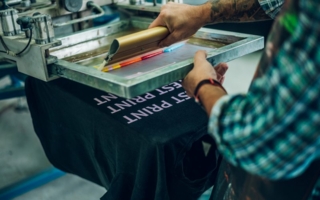21/03/2023 – Trends in textile printing
On-demand manufacturing is on the rise
Textile printing is in the early stages of a digital transformation, but progress is incremental. Less than 10% of printed textiles are now digitally printed, so there is tremendous growth opportunity, industry observers say. Textile printing consultant Johnny Shell likens it to a massive ship which takes a long time to change directions.
“Primarily, what I focus on is digital transformation,“ says Shell, who is principal analyst with the New Jersey-based Keypoint Intelligence consultancy. “Most textiles are printed using analog devices, which is very wasteful. The fashion industry alone overproduces by about 30%, which means nearly a third of what is produced is never sold at full retail. That is kind of the change that digital is bringing: the on-demand manufacturing. That way, the apparel item is not manufactured until after it is purchased.”
Shell notes that in the volume-based manufacturing model fashion has historically used, companies work 18 months in advance. The lead time involved has to do with design approval, prototyping, and sending it offshore to get manufactured, without knowledge of that buying habits will be a year and a half later.
Shell says there is a rising consumerism across the globe, with people starting to want custom items, which digital printing can do. “Minimum order quantities are not an issue with digital printing, as opposed to analog, where you may have a minimum order quantity of a thousand yards before they will take a look at what you are trying to do.”
You will find the full report by John McCurry in our upcoming print edition 1/2023. To subscribe click here.




